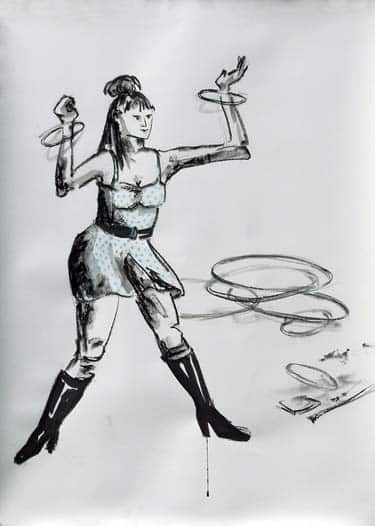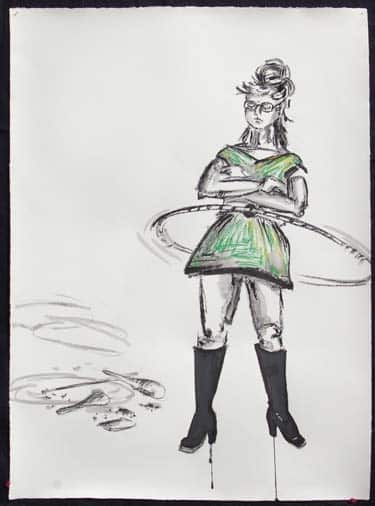by Marie Hardin
When Title IX became law in 1972, it started a chain of events that have ultimately changed the sports landscape in the United States. While the well-worn adage by women’s sports advocates, “We’ve come a long way, but we have a long way to go,” is certainly still relevant, expectations around sports at the scholastic and intercollegiate levels are far different than they were 40 years ago.
What hasn’t gotten the same level of attention is the influence Title IX has had on sports journalism.

But, of course, it has. At the very least, it forced sports reporters, editors and commentators to cover gender inequity and to learn about the law since many of the stories about Title IX, from the beginning, have been covered as sports stories.
But it also forced these same gatekeepers to grapple with the question of just what to do with women’s sports. I’m not suggesting that before 1972, women’s sports did not occasionally appear in sport sections; they did. But Title IX certainly turned up the pressure on decision-makers in sports media to think much more seriously about their priorities for this coverage.
And, of course, to think more seriously about the role women might have in the coverage of women’s sports — and sports in general. I think Title IX is a good marker for considering the movement of women into sports journalism. An “unintended consequence” of the law was that it allowed for the possibility that if women had the right to play sports, they also had the right to cover them.
Journalists Get Token Status
Although the numbers are scant (newsroom surveys to assess the presence of women covering sports didn’t start in earnest until about 10 years ago), the anecdotal evidence tells us that women started moving into sports departments in enough numbers to initiate a well-documented backlash at around the same time the same thing was happening in locker rooms and on playing fields — in the early 1980s.
In 1987, the Association for Women in Sports Media was founded by a small group of female reporters who wanted to support one another and speak out against what had become persistent harassment and discrimination.
The organization still exists and has grown over the years as more young women have decided to pursue this career. A similar organization, Female Athletic Media Relations Executives (FAME), exists for women in sports information. At the same time, female college students have opted for sports-journalism majors or certificate programs (including ours at Penn State) in increasing numbers. About 40 percent of the students enrolled in our certificate program are women.
But the “long way to go” adage is still as true for women in sports journalism or communication as it is for girls and women in sports. Our surveys, including a study of women in sports information and those done by others tell us that women are about one-tenth of the workforce in the sports-communication professions. That number hasn’t moved much at all. Women have certainly had increased visibility in some key areas — such as in the (often maligned and generally dismissed) role of television sideline reporter. Depending on how you see it, that might be understood as progress.
But the truth is that such visibility hasn’t led to a real movement out of token status. Instead, we see a phenomenon I liken to a revolving door: Young women walk into the profession while their older peers — who have decided that the sacrifices in time with family and general “quality of life” aren’t worth the career payoff — walk out. The door is constantly moving, but it’s taking women out as fast as it is bringing them in. Just as in women’s sports, there are a few “stars” in the profession who have managed to persist and gain visibility. But that’s the case with any token group, and those few individuals should not be seen as the norm.

The bottom line: No real growth.
Moving Up the Hierarchy
At the same time, research tells us that there is a connection — and very possibly a strong one — between the presence of women in a sports department and how that media organization might cover women’s sports. On survey after survey of men and women who cover sports, we’ve found clear differences in how they perceive Title IX, how they perceive coverage of sports within their own organizations and how they assess interest levels in women’s sports.
Simply: Women more often believe that women’s sports ought to get more coverage, and they are generally more supportive of Title IX. They also see more potential to draw audiences with women’s sports.
Also, when we look at the way men and women write sports stories, they make different choices about how they present Title IX and the sources they use. Not surprisingly, women more often use female sources — integrating important but often-marginalized voices — than men do.
We can surmise that if more women were in decision-making roles in sports-media organizations, women’ sports would get better coverage and ultimately be more appreciated.
But, as I noted, the relationship seems to work in the inverse. I’m convinced that at least part of the reason women are held back in sports departments is because of the persistent lesser status of women’s sports in society. In other words, the legitimacy of women to write about sports, to talk about sports — and to make decisions about how they are covered — is tied to societal beliefs about their ability to play those sports.
Title IX gave girls and women the right of entry to gyms and ball fields — and then, logically, the right to talk about what was happening in those gyms and on those ball fields. As women’s sports grows in stature, so, then, will the stature of female sports journalists.
That’s why it gets a bit frustrating when I hear women who cover sports tell me that they see no reason to advocate for strong coverage of female athletes. They don’t understand that the legitimacy of their own profession is tied to the value of women’s sports.
In our surveys and focus groups, female sports journalists have been clearly — and sometimes passionately — divided on this topic. “Why should I have to advocate for women’s sports?” I’ve heard them ask.
Quite simply, here’s why: As long as women’s sports are at the bottom of the beat-structure hierarchy in sports departments, that’s where women who cover sports will also be.
Marie Hardin is associate director for research in the John Curley Center for Sports Journalism at Penn State. She can be reached at [email protected].
Also see Curious Tension: Feminism and the Sporting Woman by Susan J. Bandy in this edition of On The Issues Magazine.
See Films Lag in Sharing The Women’s Game by Ariel Dougherty in this edition of On The Issues Magazine.
Read the Cafe for new and updated stories.
